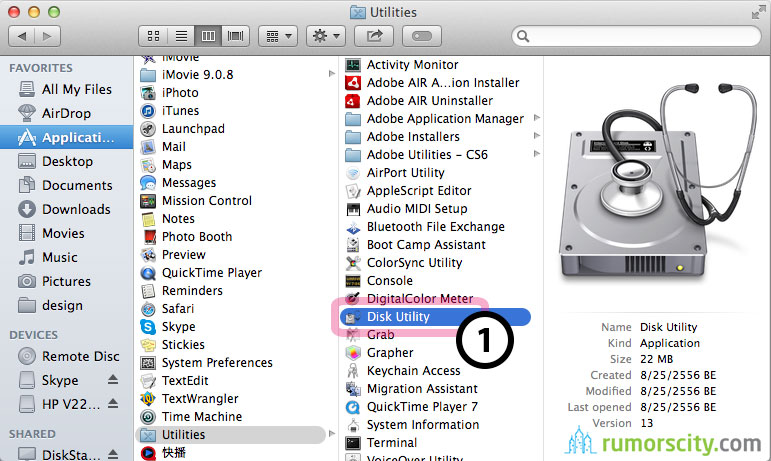

- Create a bootable mac os x mavericks install#
- Create a bootable mac os x mavericks password#
- Create a bootable mac os x mavericks download#
- Create a bootable mac os x mavericks free#
One more argument is that the free space on your disk translates into virtual memory so your apps have 'fuel' to operate on. This includes not just space for the OS itself but also space for other applications and your user data. Given your Mac isn't new and is filled with data, you will probably need enough free space on your Mac.
Create a bootable mac os x mavericks install#
How To: Dual Boot Mac OS X 10.11 El Capitan & 10.10 Yosemite How To: Create a Bootable Install USB Drive of Mac OS X 10.9 Mavericks How To: Dual Boot Mac OS X Mavericks 10.9 & Yosemite 10.10 How To: Create a Bootable Install DVD or USB Drive of OS X 10.8 Mountain Lion. Guide includes OS X 10.8.x to macOS 11.0.x. Easily check which versions of mac OS, iOS, iPadOS, or watchOS are compatible with your Mac model or iDevice. MacBook 4,1 Early 2008 2 GB 667 MHz DDR2 SDRAM 160 GB internal HD 2.4 GHz Intel Core 2 Duo Intel GMA X3100 144 MB 64-bit EFI and processor Current OS is Mac OS X 10.7.2 (11C74) And one more thing: I don't want to give up trying. We'll be repeatedly referring to these Apple OS versions below, so it's good to know the basic macOS timeline. Further down we'll explain where to get one and what problems you may face down the road. Finally, if you want to run a parallel copy of Mac OS X on a virtual machine, you too will need a working installation file of an older Mac OS X. Also, you may have noticed your Mac's performance went down right after the last update.

To begin with, some of your apps may not be working properly (or simply crash) on newer operating systems. There are many reasons that could point you to this radical decision.
Create a bootable mac os x mavericks download#
Follow what you see on the screen.So, you've decided to download an older version of Mac OS X. After you see Apple logo, hold down Option key (⌥) to access boot menu. Your drive's LED should give you an indication that the creation of the startup disk is in progress.įinally you should see an output message indicating that the entire process has finished successfully. Do not panic if you think it takes way too long.
Create a bootable mac os x mavericks password#
Once everything is correct, press Enter and provide administrator's password (because of the sudo) and be patient. Make sure the consistency is kept on both ends. Open it and type the following command: sudo /Applications/Install\ OS\ X\ Mavericks.app/Contents/Resources/createinstallmedia -volume /Volumes/SLICK-32GB/ -applicationpath /Applications/Install\ OS\ X\ Mavericks.app -nointeraction Keep in mind that this command will not work if you have named your USB drive differently (which is probably the case). Close Disk Utility and proceed to the Terminal application. When this is done, do not unplug your drive. You are going to loose anything that was stored on the selected drive but I think it goes without saying. Now choose format as Mac OS Extended (Journaled) and click Erase. Newly plugged-in drive should appear on the left sidebar in Disk Utility window.

Just a brief tip - to quickly open any application in OS X press ⌘ + Space and type the name of the application into Spotlight's bar. Plug the USB drive of your choice into your Mac and open Disk Utility. Connect your Mac to a power supply and prepare USB flash drive with at least 8 gigabytes of free space. Before we begin, I assume that you've already downloaded OS X Mavericks Installer from Apple Store.


 0 kommentar(er)
0 kommentar(er)
